Here’s a profound note to start on: nothing in life stays the same, whether technological or biological. 2020 is a perfect example – an ever-changing landscape globally, married to what was already a radically changing IT landscape, courtesy of key game-changers such as cloud adoption and internal infrastructure adaptations within many businesses. Regarding the latter, control has – in many cases – changed hands, so admin-level, rather than tech-level individuals are increasingly given more significant roles in moving IT forward within the business. Over the past two decades, IT in general has seen a change in mindset, from technology-driven thinking to a solutions-based approach and this is being reflected within the infrastructure itself. The emerging DevOps and SecOps trends show increasing autonomy for certain aspects of IT and this is further intensified at board level as the quest for “agile IT” and digital transformation of the business intensifies. As a result, the traditional, centralised IT structure is changing; add in increased outsourcing through Cloud Service Providers (CSPs) and the contemporary IT footprint looks very different to what it did 10 years ago. Even within the core of IT, ongoing migration to platforms such as Windows 10 (effectively Windows as a Service) on the client side, as well as smartphone adoption, and further embracing of virtualisation and containers at the server (either OnPrem or through CSPs) is more revolution than evolution. No one ever said IT management was supposed to be easy and service desk integration more than plays its part…
Ongoing change
Changes in workforce and workplace traditions brought on by the COVID-19 pandemic – and these are ongoing – 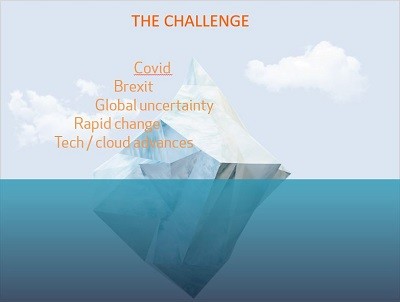 have only added to the speed of change and increased complexity of the company infrastructure. As such, ITSM – already extending out to with integration into areas of the business beyond IT, in what is known as ESM or Enterprise Service Management – needs to be both more flexible and efficient than ever. Change normally involves additional costs and these can quickly spiral out of control if the underlying infrastructure management isn’t in place to control this fundamental reshaping of businesses. We are witnessing regular examples of businesses – many historically very powerful and seeming indestructible, such as retail giants – falling by the wayside as they fail to keep up with these required changes, especially given the vagaries 2020 has brought upon businesses globally.
have only added to the speed of change and increased complexity of the company infrastructure. As such, ITSM – already extending out to with integration into areas of the business beyond IT, in what is known as ESM or Enterprise Service Management – needs to be both more flexible and efficient than ever. Change normally involves additional costs and these can quickly spiral out of control if the underlying infrastructure management isn’t in place to control this fundamental reshaping of businesses. We are witnessing regular examples of businesses – many historically very powerful and seeming indestructible, such as retail giants – falling by the wayside as they fail to keep up with these required changes, especially given the vagaries 2020 has brought upon businesses globally.
Yes, it’s a scary old world out there – or maybe “new” world is a better reference. And, from a UK business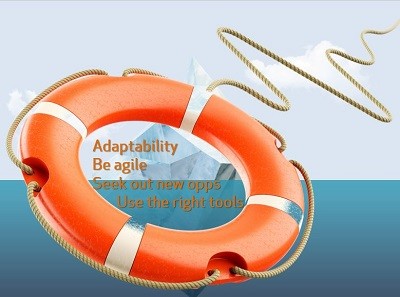 perspective, we haven’t even mentioned the potential impact of Brexit yet. We have now. So, it’s a challenging time for businesses. At the same time, those changing landscapes and uncertainty bring opportunities too, so long as you are ready to maximise those prospects. At an ITSM level, it’s about moving forward from the traditional role of service desk, without losing sight of that basic modus operandi – supporting the users.
perspective, we haven’t even mentioned the potential impact of Brexit yet. We have now. So, it’s a challenging time for businesses. At the same time, those changing landscapes and uncertainty bring opportunities too, so long as you are ready to maximise those prospects. At an ITSM level, it’s about moving forward from the traditional role of service desk, without losing sight of that basic modus operandi – supporting the users.
IT trouble ticketing management is still important, but service management now supports the whole company 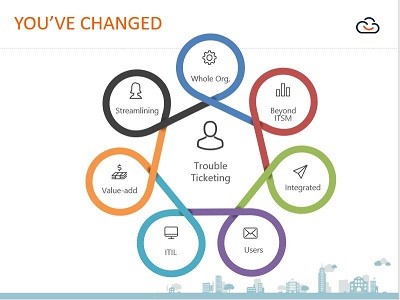 structure, not just IT. As such, it extends beyond the confines of an isolated ITSM application or platform, such as via integration with 3rd party tools. Even within the confines of an ITIL: ITSM relationship, as the former has evolved far beyond its initial vision, so the latter has had to evolve in tandem. But expanding the scope of service management can create its own efficiencies, such as by giving users more self-help capabilities, as we’ve seen with self-service portal deployments, and a general streamlining of business processes and operations as a result. ITSM – from necessary support cost evil to business enhancer? You’d better believe it…
structure, not just IT. As such, it extends beyond the confines of an isolated ITSM application or platform, such as via integration with 3rd party tools. Even within the confines of an ITIL: ITSM relationship, as the former has evolved far beyond its initial vision, so the latter has had to evolve in tandem. But expanding the scope of service management can create its own efficiencies, such as by giving users more self-help capabilities, as we’ve seen with self-service portal deployments, and a general streamlining of business processes and operations as a result. ITSM – from necessary support cost evil to business enhancer? You’d better believe it…
> Read more in our blog: Integration and Change adds value with ITSM
Digital transformation is for real
There has been much talk in recent years of “digital transformation” and the need to embrace it, regardless of the type 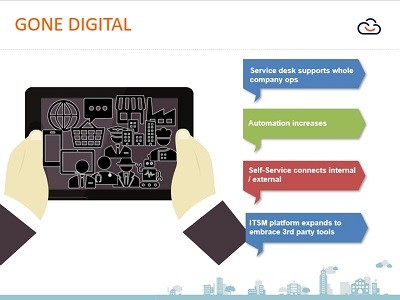 and size of business. Defined as the adoption of digital technology to transform services or businesses, through replacing non-digital or manual processes with digital processes or replacing first phase digital tech with the latest wave, what it really boils down to is this: businesses nowadays are digital – or at least are being forced down that route, whether it be a butchers, bakers – maybe even a candlestick makers – if the “new norm” means more and more people “live” from home, whether working, shopping or simply collaborating/engaging on any level.
and size of business. Defined as the adoption of digital technology to transform services or businesses, through replacing non-digital or manual processes with digital processes or replacing first phase digital tech with the latest wave, what it really boils down to is this: businesses nowadays are digital – or at least are being forced down that route, whether it be a butchers, bakers – maybe even a candlestick makers – if the “new norm” means more and more people “live” from home, whether working, shopping or simply collaborating/engaging on any level.
So, pretty well every aspect of a business is “touched” by IT nowadays. This, in turn, has to be reflected in the ITSM world; the service desk expands to support all company operations, self-service or customer service portals connect the internal and external worlds digitally and transparently, automation is deployed as far as possible and – what the ITSM platform itself cannot achieve has to be supported via 3rd party integration. It’s important to note here too that we are not looking at one of those classic 2-5 year IT windows of change; this is a “right now” requirement, in order for a business to become – or remain – competitive. Or even remain in business…
> Read more in our blog: Digital Transformation is for Real
The emergence of ESM
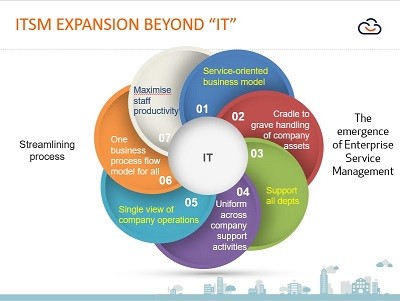 As alluded to earlier, the relationship between ITIL developments and ITSM often forms a close bond and ESM is an example of this in practice. As ITIL moved towards a “cradle to grave” handling of company assets within a service-oriented business model approach, so ITSM itself moved on to reflect this. As noted, in recent years, IT has seen a significant increase in outsourced operations, culminating in the current cloud-based strategy and software delivered almost exclusively as a service (SaaS). Yes, there is still technology – of course – underpinning every element of IT, but it has taken very much a “behind the scenes” role as business benefits have rightly become elevated. ITSM itself has undergone a similar transformation, from support toolkit to pro-active service delivery mechanism.
As alluded to earlier, the relationship between ITIL developments and ITSM often forms a close bond and ESM is an example of this in practice. As ITIL moved towards a “cradle to grave” handling of company assets within a service-oriented business model approach, so ITSM itself moved on to reflect this. As noted, in recent years, IT has seen a significant increase in outsourced operations, culminating in the current cloud-based strategy and software delivered almost exclusively as a service (SaaS). Yes, there is still technology – of course – underpinning every element of IT, but it has taken very much a “behind the scenes” role as business benefits have rightly become elevated. ITSM itself has undergone a similar transformation, from support toolkit to pro-active service delivery mechanism.
After all, it is not just IT-related activities that need a high level of support. As business processes become aligned, departments such as HR, facilities and finance can all benefit from the same form and level of service management, thereby providing uniformity across all company support activities and, in the process, streamlining company operations. So, regardless of the requirement (or problem), from the moment a new member of staff walks through the door, those needs should be handled by a single service management platform, so ordering stationery, a company car, or – for example – raising a concern with HR, should be managed in the same way as being issued with a company laptop, phone and dealing with related support issues. This, in turn, creates a single business process flow model to manage all company activities and – in so doing – both optimises that model and provides the basis for maximising staff productivity, regardless of their role in the business, IT or otherwise.
For example, it is now possible to monitor and analyse employee support across the company and establish how successful that support is, and where to improve it. The point is – analysing the performance of the ITSM system also provides significant clues as to how to tweak and improve the running of the business itself. So, a natural by-product of a contemporary ITSM solution – especially when focused upon the entire company, ESM-style – is the ability to adapt business processes to streamline those very processes and maximise employee productivity and the business bottom line.
> Read more in our blog: Taking the Service Desk Enterprise-Wide
The role of automation
OK – so we all know automation has been going to be the “next big thing” in IT for the past 25 years…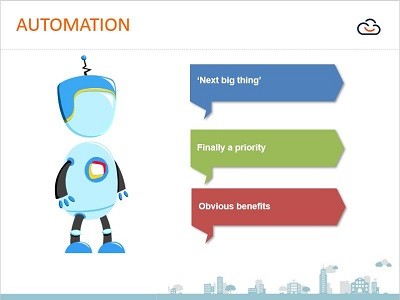
In the cyber security world especially, barely a paragraph has been written in recent years that doesn’t contain some automation/automaton reference in the form of AI or ‘machine learning’. But in the real world of service management it is finally happening. For 2020, analysts noted that 75% of service desks had automation at the top of their priority list. More to the point, a contemporary ITSM platform has to have automation at its heart; without it, a modern service desk simply cannot operate. So, if it’s in there – use it!
There are obvious benefits to automating as many of the support procedures as possible; it accelerates any problem 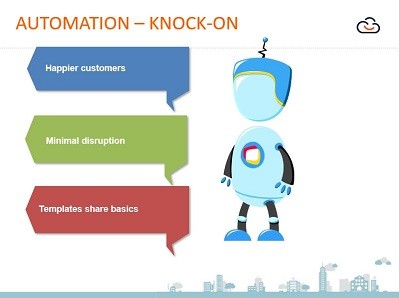 resolution, minimises human error and allows for pro-active support. It also allows for 24×7 interaction between all the different service management elements without human intervention. This optimised form of service delivery means happier users and better customer satisfaction, meaning the company operates better and generates more profit. It might be complex programming beneath the surface, but it’s not rocket science in terms of seeing the obvious benefits.
resolution, minimises human error and allows for pro-active support. It also allows for 24×7 interaction between all the different service management elements without human intervention. This optimised form of service delivery means happier users and better customer satisfaction, meaning the company operates better and generates more profit. It might be complex programming beneath the surface, but it’s not rocket science in terms of seeing the obvious benefits.
On a more mundane level, those regular adds and changes are managed with minimal disruption, transparent to the user base. And looking at the bigger picture – for example from an MSP perspective – it means that one basic automated template can provide the basics for servicing multiple customers. That is a potentially massive cost saving and makes scaling the business as simple as possible.
> Read more in our blog: Automation Comes Of Age with Integration – At Last!
Self/Customer Service Portals
Company staff have become more than familiar with home shopping, including dealing with customer service, problems, returns and related issues, all on their laptop or smartphone, so why not apply that self-service/self help scenario to the workplace?
Given the “new norm” move towards the WFH (Work From Home) initiative, the self-service portal suddenly makes an 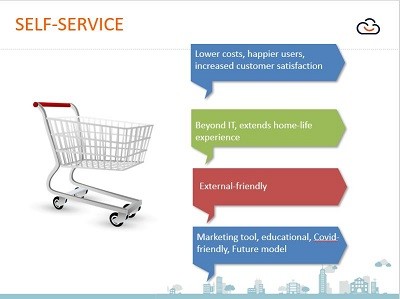 incredible amount of sense, not simply for IT scenarios, but any company operation, so they are very “ESM friendly”. Providing remote users with a simple and efficient solution for managing their support activity; for example, to get instant answers/remedies, raise support requests, request access permissions and related activities – itself justifies the deployment of a self-service portal.
incredible amount of sense, not simply for IT scenarios, but any company operation, so they are very “ESM friendly”. Providing remote users with a simple and efficient solution for managing their support activity; for example, to get instant answers/remedies, raise support requests, request access permissions and related activities – itself justifies the deployment of a self-service portal.
We all know the basic benefits of deploying such a portal – lower support costs, empowered users, more productive service desk teams… but the benefits extend beyond these obvious advantages. Providing access to data, applications, tools and support 24×7 – for homeworkers especially, the 9-5 working day rules go out of the proverbial window (which might now look out onto the garden!) – moves portals into the role of productivity maximiser. Self-service portals allow companies to centralise relevant, up-to-date information and guidance that employees can easily access at any time – so there are no excuses on the “I didn’t know that” front. They provide a trusted source of guidance and reduce the risk of well-meant, but often misleading ‘word-of-mouth’ advice from colleagues.
Key here is to build in as much automation as possible, in order to avoid the otherwise inevitable swamping of the support team. So, we are now seeing how the different elements of a contemporary service desk solution themselves interact to improve the end product. And that end product can extend beyond the confines of the virtual company walls. It works perfectly for external parties, such as MSPs (and their customers) and doubles as a great marketing tool when interacting with customers. Additionally, they make for great educational tools – training the user, improving their knowledge base and – vitally – make that information available 24×7.
> Read more in our blog: Self Service Portals and Integration
Integration is critical
Throughout the IT era, vendors have occasionally tried to do everything themselves. And failed. No IT vendor – regardless of its primary focus is a self-contained, company panacea.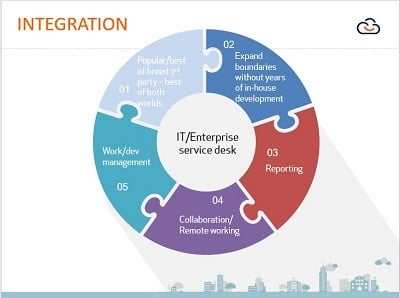
Hence, the importance of a service management platform being able to integrate with best of breed 3rd part applications, in order to provide that complete solution – the old “best of all worlds” scenario. Modern API software technology makes continuous support of those 3rd party products, as they themselves change, relatively straightforward (unlike in the “old days”), but without tying the customer to those specific apps, should they wish to change.
Again, from a customer perspective, adopting 3rd party add-ons could save several man years of internal development.
Integration examples within Sunrise ITSM itself currently include Microsoft’s Power BI for business analytics and reports, Teams for support of remote working/collaboration (with direct interaction between Sunrise and a Teams channel content) and tools such as Jira for work/development management, again with a synchronised, bidirectional feed between the two platforms. So, this isn’t simply a case of paying lip service to supporting 3rd parties, but incorporating them into the 24×7 service management platform.
> Read more in our blog: The Importance Of Being Integrated
Turning a challenge into an opportunity
Summing up, yes – difficult times, but every business challenge is also an opportunity. It might be a truism, but it this case it’s also the truth, an increasingly rare commodity in the modern world.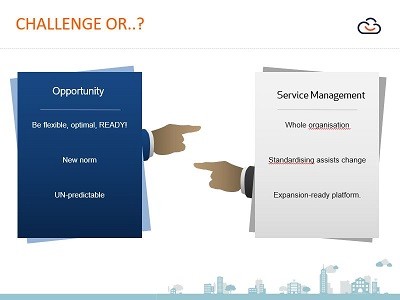
In order to, firstly survive and, secondly, thrive in this environment, businesses do need to be operating optimally, be flexible and be ready. Assume the “new norm” is simply the norm – it should have been so decades ago in many industries. At the same time, expect the unpredictable as the only current “predictable”. The landscape will continue to change.
Given this perspective, where an optimised service management platform helps enormously is in streamlining and optimising all company operations and standardising those operations for both internal and external business requirements. This, in turn, makes change management easier, while providing a ready platform for expansion as, and when, the opportunities arise.
Steve Broadhead is a technology journalist, technical researcher & author, guitarist and occasional comedy writer, who brings his unique perspective to the world of ITSM through 30+ years’ association with the IT industry.
Watch the webinar recording of The Integrated Service Desk – extending boundaries adds value

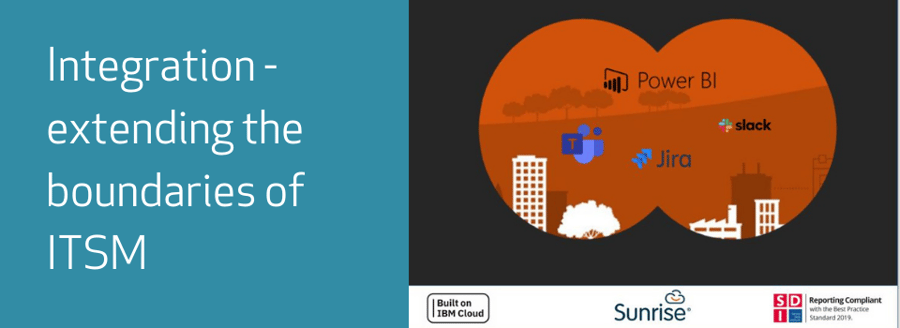
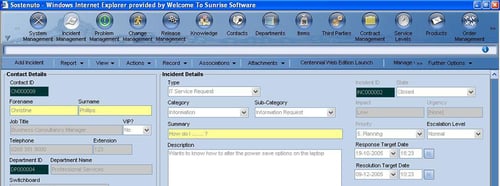
.png)
